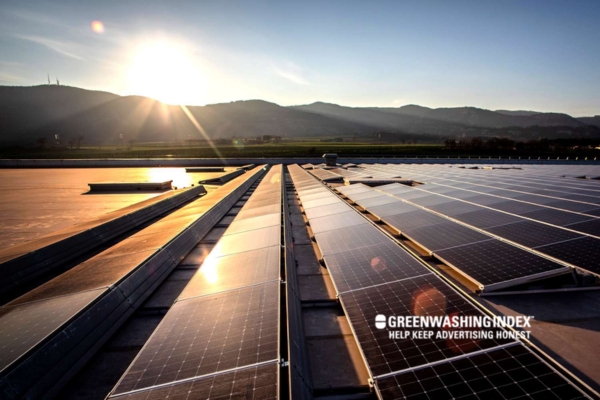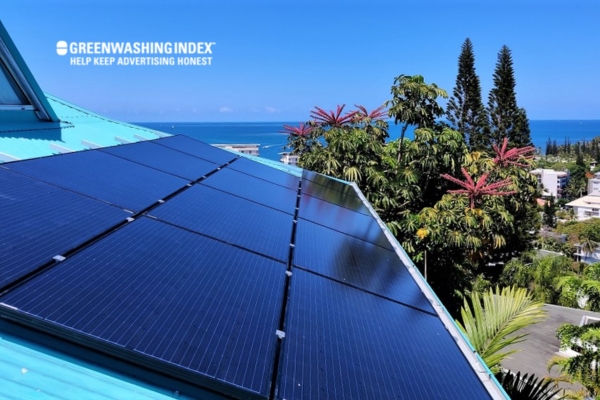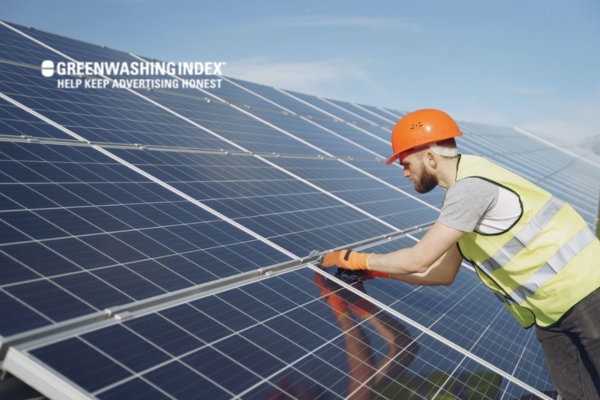Hey there! I’m Jeff, your go-to guide for all things green and sustainable. If you’ve ever wondered “How much energy does a solar panel produce?” and wished you could find all the answers in one spot, then you’re in luck. In this journey through the world of solar power, we’ll touch on the basics of how these panels work, the different types available, and what affects their energy output.
We’ll even look into how to set them up for the best performance and figure out just how much electricity you might save. Stick around as we unravel these mysteries and more.
Estimating Solar Panel Output
Are you thinking about making the switch to solar power but unsure about how much energy a solar panel can actually produce? You’re in the right place. Let’s dive into the basics of how these incredible pieces of technology work to turn sunlight into electricity, and also how you can figure out the average amount of energy they produce. It’s simpler than you might think, and it all starts with understanding a few key concepts.

The Basics of Solar Panel Energy Production
Solar panels are amazing inventions that catch sunlight and turn it into electricity we can use in our homes. But how do they do this? Let’s break it down:
- Sunlight Absorption: Each solar panel is made up of many smaller units called photovoltaic (PV) cells. These cells are designed to absorb sunlight.
- Converting Light to Electricity:
- When sunlight hits a PV cell, it excites electrons in the cell.
- This excitement creates an electrical current because it causes electrons to move around.
- The movement happens due to two layers inside each PV cell: one positively charged and one negatively charged.
- From DC to AC Current:
- Solar panels generate electricity as direct current (DC).
- Our homes use alternating current (AC), so there’s an inverter included in solar systems that changes DC into AC, making the power suitable for household use.
So, when we talk about this whole process where sun rays get magically transformed into useful household electricity, we’re diving deep into what makes solar panels essential for green living.
Calculating The Average Energy Production
Now that we know how solar panels work let’s figure out how much energy they can actually produce on average:
- Know Your Panel’s Wattage: Look at your solar panel specifications; they usually range between 250 watts and 550 watts. This number tells you how much power your panel might produce under ideal conditions—meaning lots of bright sunlight hitting them straight on.
- Understand Hours of Sunlight:
- Your location plays a big role here because different places get different amounts of sunshine per day.
- To get a rough idea, research the average sun hours per day in your area throughout the year.
- Do The Math: Multiply your panel’s wattage by the average hours of effective sunlight per day to calculate daily production. Example: If you have a 300-watt panel and your area gets about 5 hours of effective sunlight, Daily Energy Production = 300 watts * 5 hours = 1500 watt-hours or 1.5 kilowatt-hours (kWh)
- Estimate Monthly Production: Multiply daily production by days in the month for an estimated monthly output. Continuing from above, Monthly Energy Production = 1.5 kWh * 30 days = 45 kWh
Note also that over time, dirt or shadows might affect your actual numbers slightly downpipes as less light hits those PV cells full-on.
Following these simple steps will give you quite good insight into what kind of juice you’ll be getting from your shiny new panels under those bright skies!
Also Read: Mattress Disposal: Easy Steps for Eco-Friendly Solutions
Types and Efficiencies of Solar Panels
When choosing a solar panel, the type you select plays a big part in how much power you can expect. It’s like picking a car based on fuel efficiency; some models are just built to go further on less. In the world of solar panels, two big players determine your system’s effectiveness: monocrystalline and polycrystalline panels.
| Solar Panel Type | Description | Pros | Cons | Cost |
|---|---|---|---|---|
| Monocrystalline Panels | Made from a single, pure crystal of silicon. | Excellent electricity generation, even in low light. | Longer lifespan. | Higher initial cost. |
| Polycrystalline Panels | Silicon crystals are not as pure or single as monocrystalline. | More affordable. | Slightly lower efficiency. | Moderate cost. |
| Thin-Film Panels | Thin layers of special material on a surface like glass or plastic. | Lightweight and flexible, suitable for various surfaces. | Lower electricity production compared to other types. | Cost-effective choice. |
Each has its strengths and areas where one outshines the other in turning sunlight into electricity. Let’s unfold these differences and see how efficiency ratings play an essential role in energy output.
Monocrystalline vs. Polycrystalline Panels
To better understand how these types affect your solar return, here’s a deep dive:
- Material: Monocrystalline panels are made from single-crystal silicon, making them more efficient at converting sunlight into electricity. Polycrystalline panels, on the other hand, are made from melted fragments of silicon. This difference in manufacturing leads to variations in energy production capabilities.
- Efficiency: Speaking of efficiency, monocrystalline panels boast an impressive range of 22% to 27%. This is notably higher than their polycrystalline counterparts, which hover between 15% and 22%. The higher the percentage, the more sunlight is converted into usable electricity.
- Appearance: If looks matter for your installation, it’s worth noting that monocrystalline panels tend to have a uniform black hue due to their pure silicon content. Polycrystalline panels have a distinct blueish speckle stemming from their multi-crystal silicon structure.
- Cost: With greater efficiency comes a higher price tag. Monocrystalline panels generally cost more due to their complex manufacturing process and higher power output. In contrast, polycrystalline panels offer a more budget-friendly option with modest efficiency.
- Longevity and Degradation: Both panel types slowly lose effectiveness over time—a process known as degradation—but monocrystalline panels degrade at a slightly slower rate (about 0.5% per year) thanks to their high-quality silicon.
These distinctions help highlight that choosing between monocrystalline and polycrystalline isn’t just about budget—it’s about balancing upfront costs with long-term energy production needs.
Impact of Solar Panel Efficiency on Energy Output
The efficiency rating doesn’t just impact immediate performance; it shapes your system’s productivity over its lifetime:
- Higher Energy Production: A highly efficient solar panel converts more sunlight into electricity than lower-efficiency models—plainly put: they produce more bang for your buck (or sun for your space).
- Space Savings: Efficiently rated high performers require less surface area to generate the same amount of power as larger sets of lower-efficiency units—critical for limited roof space.
- Resilience Against Environmental Factors: High-efficiency panels tend often fare better against common challenges like shading or dirty surfaces since they can make more out of less optimal conditions.
- Improved Long-Term Returns: Since highly efficient models can harvest more energy throughout varying conditions year-round (including short winter days), they potentially offer greater savings or returns over their lifespan—even taking into account potential upfront cost differences.
In essence, while high-efficiency does command attention through impressive numbers immediately after installation beautifully translates beyond mere figures; ensuring technology meets term aspirations—all while securing sustainability trophies along your solar journey!
Also Read: Pistachio Shells Compostability: Breaking the Myths
Factors Influencing A Solar Panel’s Energy Production
When thinking about making your home or business greener with solar panels, there are several important factors to consider that directly impact how much power your system will generate.

Not all solar setups will perform the same, and much of this variation comes down to two key aspects: where you are and what the weather is like. Let’s explore how the amount of sunlight hitting your location and changes in weather through the seasons can either boost or reduce the energy your solar panels produce.
The Role of Sunlight and Geographic Location
The power output of solar panels hinges largely on two things: sunlight intensity and where you set them up. Here’s a closer look at why these factors matter so much:
- Sunlight Intensity: Solar panels need sunlight to produce energy, so more sunshine means more power. Near the equator, where sunlight is direct and intense, a solar panel can produce more electricity compared to areas farther north or south.
- Geographic Location: Where you live affects how much sun exposure your solar panels get daily and throughout the year. For instance:
- Closer to the Equator: Locations closer to the equator enjoy longer days and more direct sunlight year-round, increasing a panel’s productivity.
- Farther from the Equator: Areas farther from the equator experience significant variations in day length between seasons, affecting consistent power generation.
- Orientation: How your panels are angled plays a big role in catching those rays effectively. Panels facing south (in the Northern Hemisphere) catch more sun over a day than those facing north.
- Tilt Angle: The angle at which your panels tilt also matters; an optimal tilt catches maximum sun hours based on your latitude.
Maximizing efficiency starts with recognizing how pivotal proper placement is — leveraging geographical advantages while accounting for localized challenges ensures steady energy production.
Weather Conditions and Seasonal Changes
Weather doesn’t just affect mood; it deeply influences how well solar panels do their job from season to season. Here we lay out just why that is:
- Summer Benefits & Challenges:
- Pros: Longer days mean more hours of sun exposure – a boon for energy production.
- Cons: Extreme heat can lower panel efficiency since they operate best at moderate temperatures.
- Winter Woes:
- Shorter days limit hours of possible sunshine collection.
- Snow cover can block light from reaching cells within panels unless cleared away regularly.
- Cloud Cover Variations:
- While direct sunlight is best for peak performance, modern solar technology allows some electricity generation even on cloudy days—though at reduced rates.
- Rainfalls:
- Seemingly detrimental rain actually helps clear dust or dirt build-up atop installations improving energy absorption afterwards.
Understanding these patterns offers insight into expected performance across different times of year—a key asset when planning installation sizes or assessing the potential return on investments in various climates.
Also Read: Composting Cheese: Can It Be Done? Complete Guide
Installation and Angle Optimization for Maximized Output
When talking about getting the most out of a solar panel setup, how you install it and where you place it really matters. It’s like picking the perfect spot in the garden for your plants. The right location and angle can dramatically increase how much energy your solar panels produce.
So, if you’re keen on squeezing every bit of power from your panels, read on! We’re diving into how to nail the installation and tweak the angles just right to power up your green energy game.
Correct Installation for Optimal Performance
Proper installation is critical for maximizing a solar panel’s energy production. Let’s break down the steps and considerations involved in ensuring that your solar panels are set up for success:
- Check Roof Stability: Before anything else, ensure your roof can handle the weight of solar panels. A sturdy roof means a secure foundation for optimal performance.
- Consider Panel Orientation: In the northern hemisphere, facing south is best to catch sunlight most of the day; in the southern hemisphere, it’s north-facing roofs that gain more.
- Avoid Shaded Areas: Trees or buildings casting shadows can reduce efficiency significantly. A clear path to sunlight is key.
- Professional Assessment: Having experts assess your site can inform decisions on placement tailored to local climate patterns and sun paths.
- Secure Mounting Hardware: High-quality mounting equipment keeps panels safe and steady in all weather conditions; this affects long-term efficiency.
- Wiring Checkup: Reliable electrical connections ensure a smooth transfer of generated electricity back to your home or grid without loss.
- Proper Tilt Angle Adjustment:
- Seasonal Adjustment: Adjusting tilt twice a year optimizes sun exposure as it changes.
- Fixed Installation: If adjustment isn’t an option, positioning based on average sun height over the year helps balance output.
- Regular Maintenance Visits: Post-installation checks catch issues early, maintaining peak productivity through the years.
In essence, attention to these details during installation profoundly influences overall system effectiveness – laying down a strong groundwork from which abundant energy production springs.
Angle And Positioning Strategies
Finding that sweet spot through strategic angle adjustments and smart positioning means getting more bang (or kilowatts) for your buck! Here’s how:
- Latitude-As-Guide Principle:
- Use geographical latitude as a starting point; angling panels at an angle equal to local latitude maximizes yearly exposure.
- Seasonal Adjustments:
- Summer Focus: Reduce angle by 15 degrees from latitude; pulls in more summer sunlight when it’s higher in the sky.
- Winter Strategy: Increase angle by 15 degrees beyond local latitude – grabbing those low-hanging winter rays effectively.
- Avoid Obstructions:
- Keep Panels Clear: Ensure trees or structures won’t interfere with sunlight access at different times of day/year.
- Ensure Adequate Spacing Between Panels:
- Avoid Shadow Casting: Space them out so they don’t cast shadows on each other especially crucial as the sun’s position shifts throughout the day/year.
- Solar Trackers Consideration(might increase budget):
- Dynamic Tilt & Rotation: Solar trackers keep thermal collectors with optimum right-angle uniformly towards the sun throughout collecting maximum deliverable power but might include extra costs.
By meticulously choosing positions based on these guidelines while avoiding shadowy obstacles, you’re paving way toward remarkable efficiency boosts. This deliberate approach not only maximizes kilowatt-hour yield but also extends service life by mitigating wear from environmental factors.
Implementing these well-formed strategies turns into valuable leap toward achieving towering performance standards. Simply put,when it comes to powering homes or businesses with solar energy—settings matter as much as quality equipment.
Also Read: Pineapple Composting: Your Ultimate Guide to Doing it Right!
Enhancing A Solar Panel’s Performance
If you’ve been wondering how to get the most out of your solar panels, you’re not alone. Keeping them in top condition and staying abreast of technological shifts can significantly impact your system’s efficiency and energy production. We’ll first look at routine maintenance practices that can help keep your solar panels performing optimally.

Then, we’ll explore some exciting technological advancements that promise to amplify your solar panel’s power production in ways we’re only beginning to tap into.
Maintenance Practices to Maximize Efficiency
Maintaining your solar panels is key to ensuring they produce as much energy as possible over their lifespan. By following a few simple procedures, you can protect your investment and even increase the energy yield from your panels:
- Regular Cleaning: Dust, leaves, bird droppings, and other debris can block sunlight from reaching the solar cells. Rinsing panels with water or gentle brushing can remove most of these obstructions.
- Inspections for Damage: Check for cracks or wear on the glass surface or the panel’s frame regularly. Physical damage can reduce a panel’s ability to generate electricity.
- Monitoring Performance: Keep an eye on energy output through monitoring systems provided by most installers. A sudden drop in performance could signal a problem that needs addressing.
- Proper Wiring Checkups: Ensure all wires and connections are intact and secure. Damaged wiring could not only decrease efficiency but also pose safety risks.
- Shading Management: Trees grow and shadows shift; periodically assess if new shading issues have arisen that could be reducing panel efficiency.
By keeping up with these maintenance routines, you ensure that minor issues don’t turn into big problems down the road.
Technological Advancements in Boosting Power Production
As we look ahead, several technological improvements are set to revolutionize how much energy a solar panel produces:
- Bifacial Panels: Unlike traditional panels that capture sunlight from one side only, bifacial panels capture light from both sides using reflected sunlight from their surroundings; this can significantly boost their overall output.
- Perovskite Solar Cells: These next-generation cells promise higher efficiency rates than silicon-based ones currently used. Their lower manufacturing costs could also make solar power more accessible.
- AI Optimization: Artificial intelligence is transforming how systems manage output under varying conditions by dynamically adjusting settings for optimal performance across an entire grid.
- Enhanced Energy Storage: Breakthroughs in battery technology mean excess energy generated on sunny days can be stored more effectively for use at night or during cloudy weather.
These advancements aren’t just theoretical—they’re already starting down the pipeline toward commercial availability, signaling bright prospects for future solar energy production enhancements.
By staying informed about these practices and new technologies, homeowners and businesses alike can ensure they are harnessing sunlight as efficiently as possible—today and well into tomorrow’s clean-energy future.
Conclusion
Understanding solar panel energy output is essential for harnessing renewable energy effectively. With solar panels having power ratings between 250 and 550 watts and factors like location, weather, and installation playing significant roles in their productivity, it’s clear that optimizing solar energy hinges on knowledge and planning.
The potential to produce between 1.1 and 2.5 kilowatt-hours daily makes them a powerful solution for reducing reliance on non-renewable energy sources, positively impacting the environment over their approximate 30-year lifespan.
Interested in going green with renewable energy? Check out more of our insightful blogs to become more eco-conscious!



